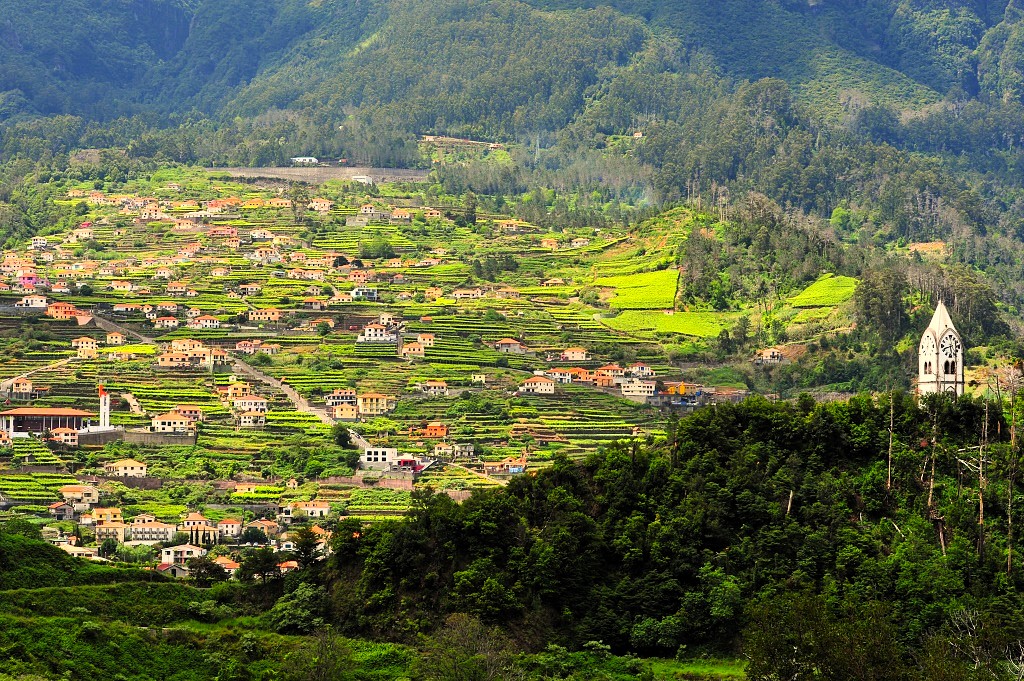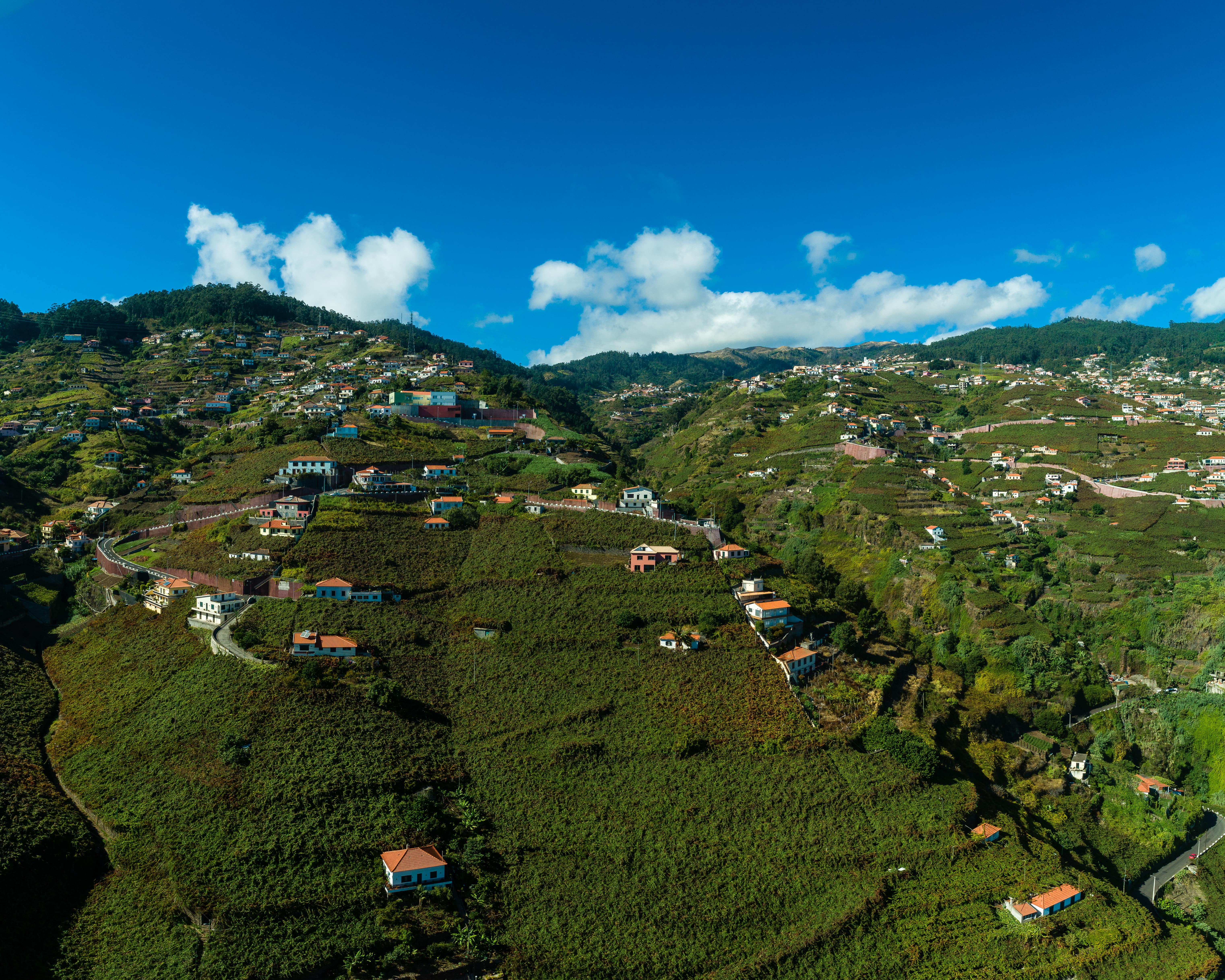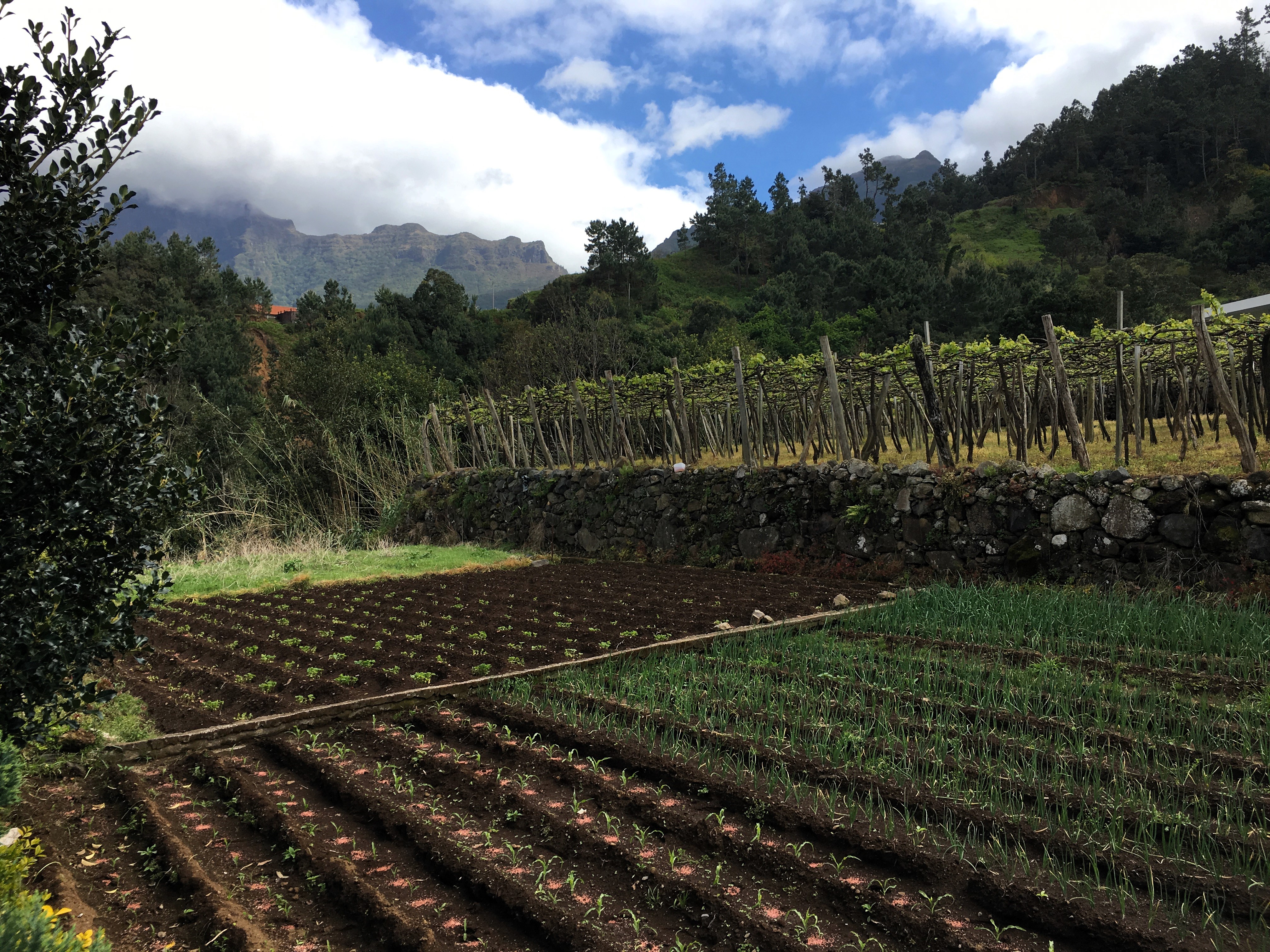Scarcity, selflessness, and courage alone cannot explain the human effort that, defying the abyss, shaped such a landscape.

Madeira is located in the middle of the Atlantic Ocean, about 1000km off the southern coast of Portugal and approximatively 700km from the southwest coast of Morocco (latitude 30º to 33º North, longitude 17º West). This geographical location gives the island territory a mild subtropical climate, with a low temperature range, both diurnal and annual. Madeira is both the name of the island and the archipelago. This includes the island of Porto Santo and two sets of islets known as Selvagens and Desertas, administratively corresponding to the Autonomous Region of Madeira.
Only the two main islands, the only inhabited ones, are part of the Região Demarcada da Madeira. The smallest, called Porto Santo, has a little accentuated relief of volcanic origin. Its surface features, extensive patches of clay soils -sandy, alkaline and rich in aluminum silicates- that are quite arid. The largest of the islands, which gives its name to Madeira Wine, also appeared due to an eruptive accident in the Quaternary period, which explains why its rocky substrate is predominantly basaltic.
Its degradation results in soils rich in iron and phosphorus, which tend to be acidic, which has repercussions on the grapes produced on its surface. The acidity is what makes Madeira Wine unique, contrasting harmoniously with the natural sweetness of the fruit, which is accentuated by the fortification process that turns it into a liqueur. It gives it a great freshness, when compared to other fortified wines. The specificities of this environment mean that the grape varieties used have organoleptic qualities that are different from those they tend to acquire in other regions of Europe where they are grown, as Eduardo Clemente Pereira observed in the 1960s. They also change from loin to loin, due to a complex and labile combination of varying factors.

The Madeiran terroir is a true patchwork, with each cultivar adapted to a specific niche. In some cases, grapes of the same variety can produce very different musts in different parts of the island, with the same maturation time. In fact, it is a "nano terroir" extending just over 400 hectares in extension -about a quarter of the vineyard area of the municipality of Vidigueira.
Madeira Wine would not exist without what anthropologist Jorge Freitas Branco referred to as "the hanging gardens of the Atlantic". It was thanks to a titanesque effort, carried out by successive generations, that the "vilão" gradually domesticated its habitat. He transformed the steep slopes of the island into a succession of narrow terraces, the "poios", which we find today even on the steepest slopes.
Looking at the outcome, it seems incredible to believe that it is the result of a simple process of self-organization, as the architect Rui Campos Matos observes: "Scarcity, selflessness and courage alone cannot explain the human effort that, defying the abyss, shaped such a landscape".
Without what the islanders call "poios", there would never have been enough grapes for Madeira Wine to be exported on a large scale. Behind this feat of vernacular engineering, there is a know-how, passed down through generations, without the use of technical manuals or YouTube tutorials. This practical knowledge focuses particularly on the construction of cyclopean walls in regional basalt that support the terraces, where the vines grow. This landscape, which seems to be made with a square, is the result of a set of techniques that guarantee its perenniality.
This unique agricultural system is the result of a human effort that began with the introduction of sugar cane to Madeira, shortly after its discovery. Most of the plantations were then located on the south coast, where the climate was very dry in the summer. The progress of this crop was only possible thanks to an enormous effort aimed at the domestication of water resources. The strategy adopted, since the fifteenth century, has consisted of directing water from the numerous streams that originate in the center of the island to the plantations located on the southern slopes, through the construction of a network of canals, locally called levadas.

In Kate Brüdt's account of her stay in Madeira, the importance that this relic of the pre-industrial era continued to have in her time, performing several functions simultaneously, was clearly marked:
"The narrow paths that connect the isolated villages and that cross the interior of the island are sometimes steep and almost impassable. However, good flat paths follow along the levadas, artificial streams that supply water throughout the island. These small, artistic gutters are found all over the island. It is thanks to them that the remote places have plenty of water in the summer when the streams dry up almost completely. Often the levadas gather water from several streams before reaching the parishes. In some cases, water is even directed from the north slope to the south slope on a hill. This water is not only used for watering but also for drinking. In almost all villages there are fountains nowadays where the water from the levadas is filtered and then consumed".
The same author also underlined, in her work, the way in which the levadas and the poios form a whole:
"It is this channel network that makes agriculture in Madeira possible. The ploughable field rises to a considerable height from the mountains in a continuous succession of small terraces. These small plots are found on the southern slope up to 800 meters high".
Today, many poios, built at great cost by past generations, are abandoned, crumbling little by little as they are no longer cultivated. The continuity of the production of grapes for Madeira Wine thus represents a brake on its disappearance.
